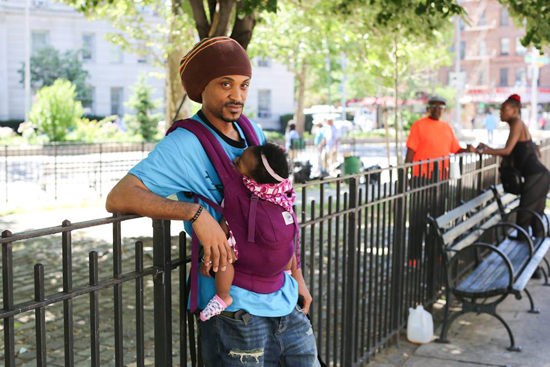Refugees, primarily from Syria, Afghanistan and Iraq prepare to board a train at a refugee transit camp, or reception center for refugees and migrants, in Gevgelija, Macedonia on October 2, 2015.
The refugee crisis is inescapable in today’s news. Striking visuals emerging from Europe, the Middle East, and Africa illustrate a story of both desperation and hope. These images allow viewers to stand for a moment alongside migrants and refugees fleeing their home countries in search of a new life and new opportunities.
Refugees and migrants enter a registration and transit center in Opatovac, Croatia, on October 7, 2015. Approximately 4000-5000 people, mostly from Afghanistan, Iraq, and Syria, pass through this border town every day on their way to Western Europe.
On November 14-15, the Tufts Institute for Global Leadership (IGL) and VII Photo Agency mark 10 years of collaboration with a series of seminars and workshops at VII Perspectives: Migration. VII founder and Chair of IGL’s Program for Narrative and Documentary Practice, Gary Knight, will be joined by leading VII photojournalists for two days of dialogue and hands-on experience. A selection of several of the photographers’ work on the refugee crisis is highlighted below (via).
One thousand migrants and refugees from countries including Iraq, Syria, Pakistan, and Afghanistan, as well as regions of the Balkans and Africa at an emergency shelter at Olympia Stadiom in Berlin, Germany on September 24, 2015.
Photos by Ashley Gilbertson
Ashley Gilbertson’s images capture refugees – mostly from Iraq, Syria, Pakistan, and Afghanistan, as well as regions of the Balkans and Africa – on their way into and through Europe during September 2015.
The exodus of people from Africa, Central Asia, and the Middle East to Europe is the largest movement of people since World War II. Working in the refugee transit centers, which see thousands of people daily, the photographer notes that conditions at some of the camps are getting slightly better. However, some conditions – such as five hour train rides packed so tightly there is no room to move beyond the spot people are standing – reflect challenges in addressing the scale of the crisis.
Refugees primarily from Syria, Iraq and Afghanistan are called to by volunteers as they land near Scala, on the island of Lesvos, Greece on September 30, 2015.
Refugees primarily from Syria, Iraq and Afghanistan are helped by volunteers as they disembark boats near Scala, on the island of Lesvos, Greece on September 30, 2015. The Agean sea is particularly rough, with the first signs of winter storms beginning today. Many refugees were sea sick, some to the point of life threatening conditions due to dehydration and cold.
Kadoni Kinan, 26, a volunteer, helps a young Syrian boy as he disembarks a boat near Scala, on the island of Lesvos, Greece on September 30, 2015. Kadoni Kinan left his home in Saragep, Syria five years ago. Kinan successfully filed for refugee status, and today lives in Belgium, where he studies Flemish at school and volunteers for the Red Cross.
Photos by Ed Kashi
In November 2013, photographer Ed Kashi went to Iraq and Jordan, working with the International Medical Corps (IMC). IMC is a humanitarian non-profit organization that provides aid and relief to those affected by conflict and crisis.
The photographer’s work reflects IMC’s efforts to increase awareness and improve not only the physical, but also the mental health of young refugees plagued by depression, fear, suffering, and the sense of a life turned upside down. His images intimately llustrates the plight of this lost generation.
Children gather in an enclave of tents at the Al Za'atri refugee camp for Syrians near Mafraq, Jordan on Nov. 25, 2013.
A young girl enjoys a lollipop while watching shoppers in the Domiz Camp for Syrian Refugees just outside of Dohuk, Iraq on Nov. 23, 2013.
Refugees walk through the overcrowded Al Za'atri refugee camp for Syrians, near Mafraq, Jordan on Nov. 17, 2013. There, International Medical Corps, IMC, is pushing to increase awareness and improve not only the physical, but also the mental health of young refugees plagued by depression, fear, suffering, and the sense of a life turned upside down.
Photos by Ron Haviv
Like Maciek Nabrdalik’s, this selection of Ron Haviv’s photographs are centered on the Lesvos, Greece. There, he has captured the work of volunteers helping refugees to arrive safely, as well as the migrants’ journey once they have made it to shore.
A refugees looks towards Turkey after arriving on the Greek island of Lesbos.
Refugees arrive on the Greek island of Lesbos.
A Spanish volunteer lifeguard helps refugees arrive on the Greek island of Lesbos.
While looking at these images of hope and love, I couldn't help but think, "Where is America?"
Then I remembered. We're building walls.
For more on . . .
-N- Stuff : Amazing Photos : Humanity
BE SURE TO SCROLL DOWN AND SUBSCRIBE - THANKS FOR READING!










































